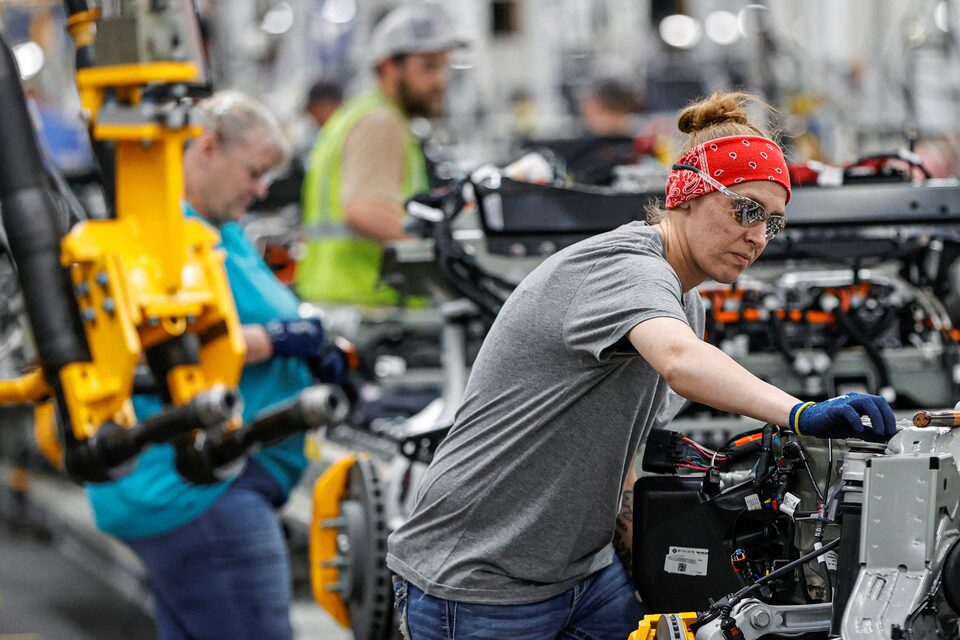
In the United States, more than 13% of citizens live below the poverty line. However, at the same time, while 1 in 3 Americans make enough money, they cannot make ends meet. Alice dominates the “American Dream” that is unattainable in reality.
ALICEs are a new socioeconomic category in the United States related to workers, but with small assets and limited income, where the term comes from the first letters of Asset Limited, Income Contrained, Employed.
This idea was conceived by the United For ALICE program of the United Way, an international network of more than 1,800 local nonprofit fundraising affiliates. This term describes Americans whose wages exceed the poverty line for a family of four of $31,200, or $15,060 per person, while at the same time struggling to pay for basic needs.
As Business Insider reported, many ALICEs are workers whose wages typically aren't enough to cover their bills, meaning they live on the margins. Some are forced to sacrifice rent for their children's food or to visit the doctor.
Some of our calculations showed that by simply buying the same thing every year, ALICEs would have to work for another full year
Today, about 29% of American households are enrolled in ALICE, while 13% are below the U.S. poverty line, United For ALICE calculates using data from the Census Bureau's American Community Survey and United Way's estimates of how much a family needs to get by. by.
Many government initiatives may help many citizens climb out of poverty, but according to United For ALICE Director Stephanie Hobbs, the federal poverty level is outdated in many respects because it does not take into account regional differences and the changing share of money in the world. Spend on food.
Hobbs also said that less attention is being paid to helping those who are better off financially but unable to invest in their future.
An increase in income, but also inflation
The ALICE category has been on the rise across the United States over the past decade or so, with Montana and Idaho seeing big jumps.
This is because the income of many Americans has risen, but it may not have kept pace with rising inflation rates and housing prices.
Hobbs cites how difficult it is to collect data on the pressure millions of Americans experience in their daily lives to make ends meet. “Are you going to take your baby's medicine or are you going to have dinner tonight? Are you going to leave the light on? Are you going to hire someone to babysit?”
To qualify for the Supplemental Nutrition Assistance Program (SNAP), for example, families' income must be less than about 138% of the federal poverty level, meaning a family of four must have a total income of less than $39,000.
For Supplemental Security Income, for people with disabilities, the maximum for individuals is usually $23,652 in annual wages. Some state-to-state benefits are often available to individuals and families with incomes between 200% to 250% of the federal poverty level.
United For ALICE found that inflation has hit these households harder than the average American.
More and more Americans, despite having an income, cannot afford it.
The Consumer Price Index, one of the leading indicators of inflation in the United States, includes many goods and services that ALICE does not buy often, such as dining out, sporting goods, or concert tickets. At the same time, over the past 12 years, ALICE has lagged behind in salary increases.
“Some of our calculations showed that by just buying the same thing every year, Alice would have to work another full year to provide those things during that time period,” Hopps said.
Alice is on the rise
“There is a disproportionate impact on black and Hispanic families, and people with disabilities, younger and older families are more likely to be below the ALICE threshold, as are single-parent families with children,” Hobbs said.
In fact, many Americans do not necessarily fall into poverty, but rather jump into the Alice category. This comes as the share of Americans above the Alice threshold declined in nearly every state from 2010 to 2021.
The spread of ALICE is one of the main reasons why Americans are not optimistic about the economy in their country, while it creates stereotypes about the industriousness of Americans.
“People have a lot of stereotypes about who is lazy or that people don't try hard enough. Our data shows that these are the costs, what the jobs pay, and most of these jobs don't pay enough to cover the costs.”
“It is a mathematical equation and it is a structural problem. It does not mean that people are not doing their best,” says the specialist.
Is ALICE only present in the United States or is it also present in European countries, such as… Greece.

“Avid problem solver. Extreme social media junkie. Beer buff. Coffee guru. Internet geek. Travel ninja.”





More Stories
“Recycling – Changing the water heater”: the possibility of paying the financing to the institution once or partially
Libya: US General Meets Haftar Amid Tensions Between Governments
New tax exemption package and incentives for business and corporate mergers..